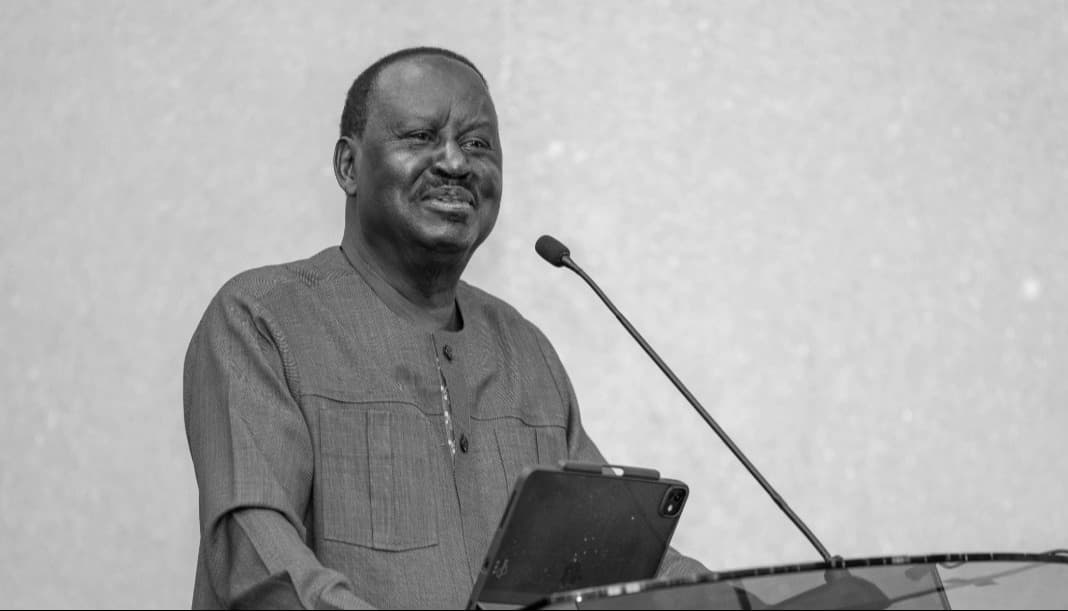Loading News Article...
We're loading the full news article for you. This includes the article content, images, author information, and related articles.
We're loading the full news article for you. This includes the article content, images, author information, and related articles.
The passing of veteran opposition leader Raila Odinga on Wednesday, October 15, 2025, has left a significant void in Kenya's political arena, triggering a scramble for succession within his Orange Democratic Movement (ODM) party

Kenya is grappling with a profound political shift following the death of former Prime Minister Raila Amolo Odinga, who passed away on Wednesday, October 15, 2025, at the age of 80 in Kochi, India, after suffering a cardiac arrest. Odinga, a towering figure in Kenyan politics for over four decades, was accorded full military honours, including a 17-gun salute, and was buried at his rural home on Sunday, October 19, 2025. His death has not only plunged the nation into mourning but has also ignited intense discussions about the future trajectory of Kenyan politics, particularly concerning the Orange Democratic Movement (ODM) and the broader opposition landscape.
President William Ruto, speaking at Odinga's funeral service in Bondo on Sunday, October 19, 2025, acknowledged Odinga's immense influence, describing him as "the father of our democracy" and a "giant" of Kenyan politics. Ruto also pledged support for ODM's unity, stating that he would not allow anyone to "kill ODM or gamble with it outside the broad-based government." This statement comes amidst a backdrop of a working agreement signed between Odinga and President Ruto in March 2025, a pact aimed at fostering national unity and stability.
Raila Odinga's political journey was marked by persistent advocacy for multiparty democracy, constitutional reform, and electoral integrity. He was instrumental in pushing Kenya's transition from a de facto one-party regime in the early 1990s and played a crucial role in securing the progressive 2010 Constitution. Despite contesting the presidency five times (1997, 2007, 2013, 2017, and 2022) without success, he remained a central and often polarising force, earning him monikers such as "the enigma of Kenyan politics."
His political career was characterised by periods of detention without trial, exile, and repeated electoral disputes, including the disputed 2007 election that led to widespread ethnic violence. However, he also demonstrated a remarkable ability to reconcile with former rivals, notably the 2018 "handshake" with then-President Uhuru Kenyatta and the recent pact with President William Ruto.
Odinga's death has immediately triggered a succession battle within the ODM party, which he founded in 2005 and led as its undisputed head. The party's National Executive Committee (NEC) moved swiftly to appoint Siaya Senator Oburu Oginga, Raila's elder brother, as the acting party leader. This move is seen by some as an attempt to maintain stability and signal continuity, particularly in light of internal divisions that had emerged within ODM regarding its alignment with the broad-based government.
However, the absence of a clear, nationally recognised successor with Odinga's charisma and cross-regional appeal poses a significant challenge for ODM. While figures like former Mombasa Governor Hassan Joho, a charismatic ODM deputy leader, and former Kakamega Governor Wycliffe Oparanya, a strategist, are being mentioned, none currently command the same widespread influence. ODM Secretary General Edwin Sifuna, who has openly opposed the broad-based government, has emphasised the need for party unity and adherence to Odinga's last public pronouncements, which suggested ODM would field a candidate in the 2027 elections.
The political landscape leading up to the 2027 General Election is now subject to significant realignment. President Ruto, who had reportedly banked on Odinga's support for the 2027 elections, must now craft a new political blueprint. The absence of Odinga, who served as a unifying symbol for opposition forces, could lead to the splintering of the opposition and make coalition-building more challenging.
Regional dynamics, particularly in Odinga's traditional strongholds of Nyanza, Western, and the Coast, are also expected to undergo profound shifts. The Luo community, which has historically shown unwavering loyalty to Odinga, will face the question of whether its next leader will emerge from the Odinga family or a new generation.
The immediate future of Kenyan politics is marked by several uncertainties. Can ODM maintain its cohesion and relevance without its charismatic founder? Will new opposition figures emerge to fill the vacuum left by Odinga, or will the political landscape consolidate further around the ruling party? The role of the youth, particularly the Gen-Z activists who have recently engaged in protests, will also be crucial in shaping future political discourse.
The coming months will be critical as political players recalibrate their strategies and alliances. The focus will be on how ODM navigates its internal succession, how the broader opposition reorganises, and how President Ruto adapts his political strategy in a post-Raila era. The enduring lesson from Odinga's journey is the persistent need for robust electoral institutions and a political culture that transcends ethnic divides.
The immediate focus will be on ODM's upcoming internal elections and how various factions within the party align. Observers will also be keen to see how other prominent political figures position themselves to potentially fill the opposition leadership void. The nature of political discourse and mobilisation, especially among the youth, will be a key indicator of Kenya's political direction in the lead-up to the 2027 General Election.
Keep the conversation in one place—threads here stay linked to the story and in the forums.
Other hot threads
E-sports and Gaming Community in Kenya
Active 6 months ago
Popular Recreational Activities Across Counties
Active 6 months ago
The Role of Technology in Modern Agriculture (AgriTech)
Active 6 months ago
Investing in Youth Sports Development Programs
Active 6 months ago